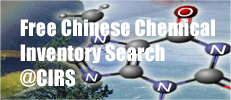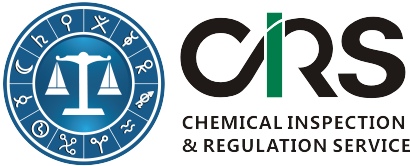
Data Requirements for New Chemical Notification in China
20 June 2011 by Grace Ma, senior regulatory consultant, CIRS China
On 19 Jan 2010, the Ministry of Environmental Protection (MEP) released the revised version (the Order No. 7) of the Measures on Environmental Administration of New Chemical Substances. The new regulation replaced the old regulation issued in 2003 and came into force on 15 Oct 2010.
Under this regulation, companies shall submit new chemical substance notification to the Chemical Registration Centre (CRC) of MEP for the new chemicals irrespective of annual tonnage, i.e. chemicals other than the approximately 45,000 substances currently listed on the Inventory of Existing Chemical Substances Produced or Imported in China (IECSC).
There are three types of notification: typical notification, simplified notification and scientific research record. Each type of notification requires different sets of data. In this article we will discuss data source, data sharing, test agencies and test methods for the notification of new chemical substance in China first. After that we will summarize the data requirements for each type of notification.
NEW! A copy of free guidance documents on new chemical substance notification in China can be found here.
NEW! Notification of polymer in China can be found here.
Data Source
Data generated through the following sources is accepted for the notification of new chemical substances in China: test reports, published authoritative literature, authoritative database, and other non-testing methods such as QSAR, read-across and expert opinion. However, test reports are more important than other data sources. Data generated by non-testing methods is usually not accepted at initial stage of review unless the testing could not be conducted scientifically.
For different data sources, the required supporting documents are different. For the data generated by testing, the certificate of the test agency must be provided. For the data generated from published literature, the original text of the literature must be provided. A summary or a quotation is not enough. For the data generated from authoritative database, the name of the database, the issuing agency, and the version number shall be given. For the data generated by QSAR, the QSAR model, parameters, the recommending agency or research agency of the model, the version, the valid illustration of results and other useful information shall be provided. For expert opinions, the general information about the expert, such as the title/duty, company/organization, field of research, and main research achievements shall be mentioned.
Data Sharing
Data sharing is not mandatory but encouraged under the regulation. If several companies would like to notify the same substance, they will have two options to share data for typical notification: joint notification or repeated notification.
A joint notification refers to the case in which a notification dossier is jointly submitted by two or more applicants. When a joint notification is approved, an independent Registration Certificate will be issued for each applicant.
Repeated notification allows a late applicant to refer to the dossier and data prepared by the previous applicant. Furthermore, the written authorization from the previous applicant is required. This is similar to the joint submission process under REACH.
It shall be pointed out that in both cases, the notification tonnage band shall be the sum of the annual tonnage of each applicant.
If one company or several companies would like to register several substances with similar structures and toxicological properties, he or they can submit one serial notification or one joint serial notification dossier for the group of chemicals. This is similar to the registration of chemicals by categories under REACH.
Test Agencies and Test Methods
According to the regulation, the test report must be written in Chinese or in English for the minimum data required. Test reports shall indicate clear methods used and be accompanied by the accreditation materials provided by competent authorities.
Some of the eco-toxicology tests must be carried out in MEP-approved eco-toxicity laboratories in China. Other tests can be carried out in domestic laboratories with certain qualifications and/or overseas testing agencies (GLP laboratories are preferred). The laboratories based outside of China must be certified by the local country and the copy of certificate of the laboratory must be provided. They may complete the test as per Chemical Test Guidelines (HJ/T153-2004) of China or follow better standards such as internationally renowned OECD methods and ISO standards.
Data Requirement for Different Types of Notification
There are three types of notification: Scientific Research Record, Simplified Notification and Typical Notification. The difference between Scientific Research Record and other two types of notification is that for the former the related activities could be started once the notification form is submitted and for the latter related activities (manufacturing or importation) can only be started after the applicant receives the registration certificate issued by CRC.
- Scientific Research Record
- Testing data is not required. Only a Scientific Research Record form needs to be submitted;
- Simplified Noitification Under Basic Conditions
- 1~3 of the following tests must be carried out in Chinese labs approved by MEP: ready biodegradability, acute toxicity study with Brachydanio rerio, acute toxicity test with earthworms depending on substance properties;
- Melting point, partition coefficient n-octanol/water and water solubity are required;
- Simplified Noitification Under Special Conditions
- No minimum data requirements;
- Simplified notification form and corresponding supporting document of evidence shall be provided;
- Existing data shall be provided if available;
- Typical Notification
- Four levels: 1-10t, 10-100t, 100-1000t/y, 1000t/y+;
- Data requirements increase with tonnage band;
- Many high-level tests can be wavied based on the results of low-level tests;
- Minimum data requirements for different tonnage band can be found here.
About the Author
Ms Grace Ma is a senior regulatory affairs consultant and QSAR modelling specialist in CIRS China. She is now the head of China new chemical notification team in CIRS. She has significant experience with data evaluation, data gap analysis and dossier preparation for China REACH. She has prepared over 20 new chemical notification dossiers since the begining of 2010, among which 15 have been accepted and approved. She had a M.S. degree in computational chemistry and QSAR modeling.
Contact Our Expert
- Ms. Grace Ma, China
Office
11F Building 1, Dongguan Hi-Tech Park, 1288 Chunbo Road, Binjiang District, Hangzhou 310052, China
Tel: +86-571 8720 6555 | Fax: +86-571 8720 6533
Email: mcy@cirs-group.com

Related Regulations
- Regulations on Safe Management of Hazardous Chemicals in China(2011)
- Registration of the Import and Export of Toxic Chemicals in China
- Classification, Labeling, Packaging of Chemicals and SDS in China (China GHS)
- Cosmetics Registration in China(2010)
- Korea Toxic Chemicals Control Act (TCCA)
- Japan Chemical Substances Control Law (CSCL)
- Japan Industrial Safety and Health Law (ISHL)
- Chemical Notification in Malaysia (EHSNR)
- EU REACH Registration

